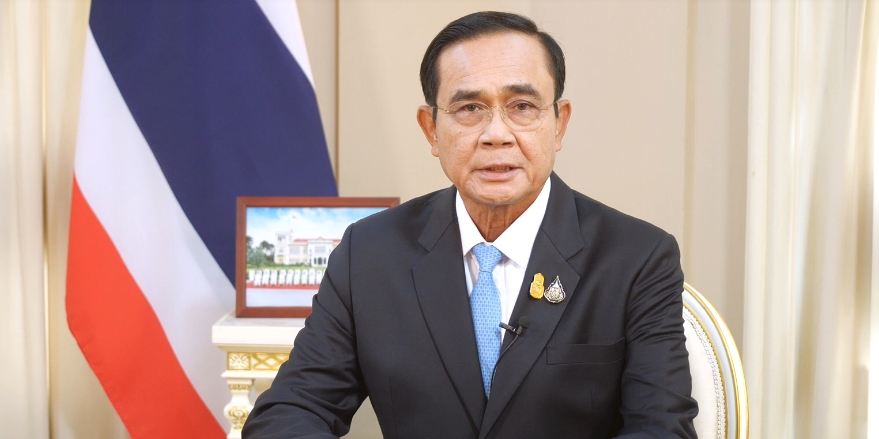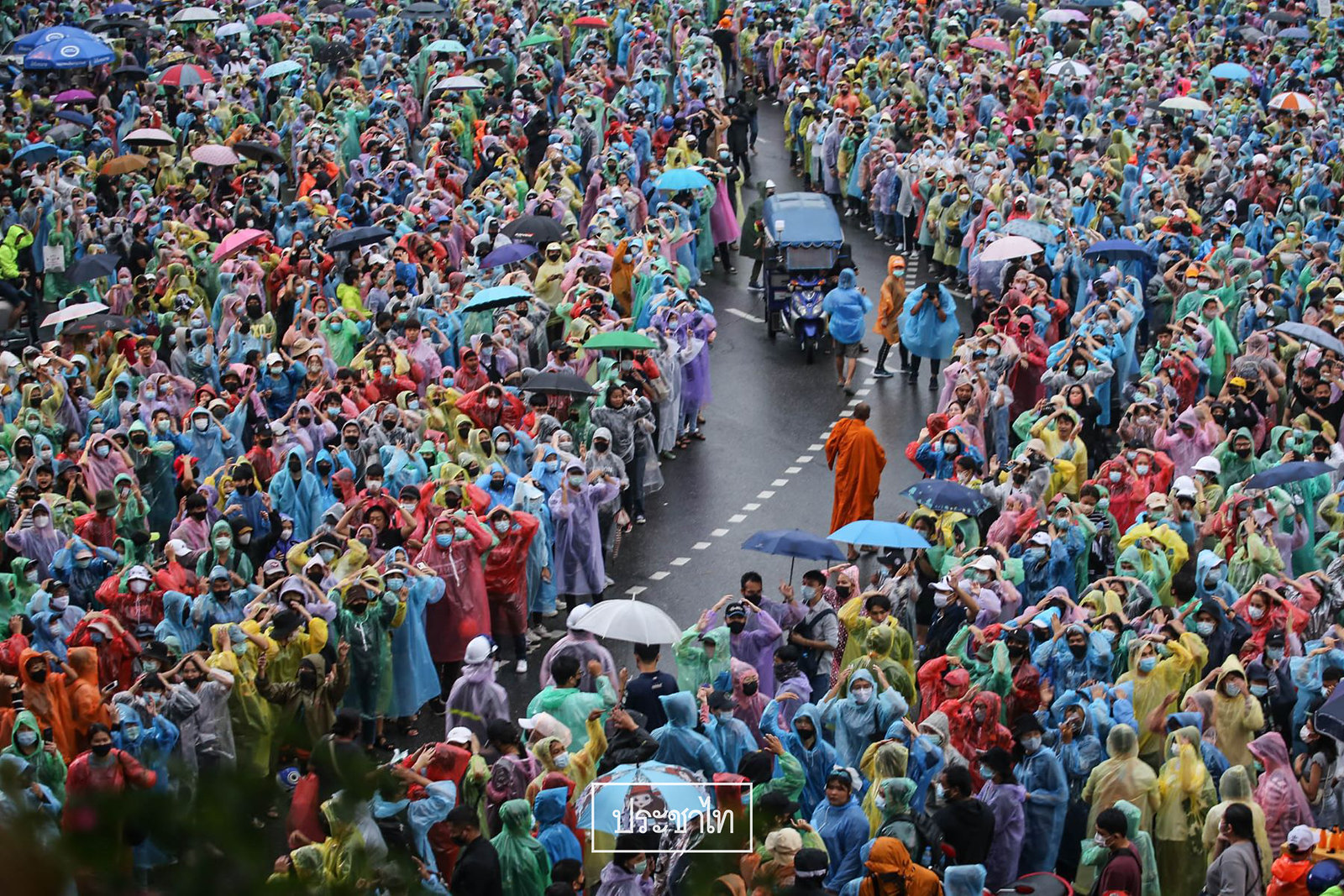
Prime Minister Prayut Chan-o-cha lifted the severe state of emergency today at 12.00, according to the Royal Gazette. The severe state of emergency was in force for 6 days from 15-22 October.
The state of emergency imposed restrictions on Bangkok and surrounding areas. They included a ban on public gatherings of more than five people, a ban on reporting information that threatened public stability, and control over transportation and access to certain buildings, in accordance with the Prime Minister’s orders.
The severe state of emergency was described as an “emergency in emergency” due to the pre-existing use of the Emergency Decree in response to the coronavirus outbreak which the government extended for the 7th time until the end of November.
After Prayut announced the severe state of emergency on 16 October, it was expected to end on 13 November. But it has ended today (22 October) after protesters publicly defied it for six straight days, marking another victory of the pro-democracy protesters.
Protesters have been gathering on the streets of Bangkok and other provinces every day since 14 October, demanding the resignation of Prayut, constitutional amendments, and monarchy reform.
Yesterday, Prayut gave a speech asking all groups to take one step back, and told the protesters to rely on the parliamentary process to get things done. On 20 October, the cabinet approved a special session of parliament for a debate on 26-27 October.
Failure to demonize protesters

The government failed to portray the protesters as aggressive and violent, causing a political backfire and pressuring them to step back.
Prayut announced the severe state of emergency on 15 October in response to the protest on 14 October which they claim may have disturbed the public order.
The anti-dictatorship protest on 14 October was part of an expected response after parliament postponed debate on constitutional amendments for 30 days on 24 September, disappointing the protesters demonstrating in front of the parliament on that day.
The government claimed that the severe state of emergency was announced because of illegal protests in violation of the public assembly law, and specifically pointed to an incident where a royal motorcade passed through a protest site.
Three protesters, Ekkachai Hongkangwan, Boonkueanoon Paothong, and Suranat Paenprasoet, have been charged with allegedly harming the Queen’s liberty under the scarcely used Section 110 of the Criminal Code, which carries a penalty of “imprisonment for life or imprisonment of sixteen to twenty years.”
However, the government failed to demonize the protesters as public opinion largely did not believe that the protesters intended to harm the Queen. According to many media reports from the scene, the protesters in fact opened a path for the royal motorcade to pass through.
In defiance of the government’s restrictions, the protestors gathered again on 16 October at Pathum Wan. The government made the decision to disperse the peaceful protesters using water cannon with dye and a chemical irritant. The protesters, which included students, remained nonviolent, leading to criticism of the government for its excessively harsh measures, and provoking even more protesters to come onto the streets.
The government tried to control the narrative again by ordering the closure of media outlets which had given extensive coverage to the protests, including Voice TV, Prachatai, the Reporters, and the Standard. Their attempt backfired as the protesters continued the demonstrations and now included a demand for a free press.
Related story: Court lifts suspension orders against Voice TV, Free Youth
In their last attempt to provoke violence, pro-monarchy protesters in yellow shirts gathered at Ramkhamhaeng University to challenge the pro-democracy protesters. A minor clash took place between pro-monarchy and pro-democracy protesters, initiated by the pro-monarchy yellow shirts.

Caption: Pro-monarchy protesters tried to remove a fence to go to attack the pro-democracy protesters.
Leaked documents confirm that the government sponsored the pro-monarchy gatherings by “inviting” people to join. Some reluctant volunteers defied orders by showing the three-finger symbol while wearing a yellow shirt.

After failing to frame the protesters as violent, Prime Minister Prayut Chan-o-cha took a step back and lifted the severe state of emergency, asking the protesters to rely on the parliamentary process. The majority of the protestors’ demands remain unmet, however, as major political parties have insisted that they would not include monarchy reform in their agenda, and the government persists on arresting anyone it can identify as a protest leader.

Since 2007, Prachatai English has been covering underreported issues in Thailand, especially about democratization and human rights, despite the risk and pressure from the law and the authorities. However, with only 2 full-time reporters and increasing annual operating costs, keeping our work going is a challenge. Your support will ensure we stay a professional media source and be able to expand our team to meet the challenges and deliver timely and in-depth reporting.
• Simple steps to support Prachatai English
1. Bank transfer to account “โครงการหนังสือพิมพ์อินเทอร์เน็ต ประชาไท” or “Prachatai Online Newspaper” 091-0-21689-4, Krungthai Bank
2. Or, Transfer money via Paypal, to e-mail address: [email protected], please leave a comment on the transaction as “For Prachatai English”

